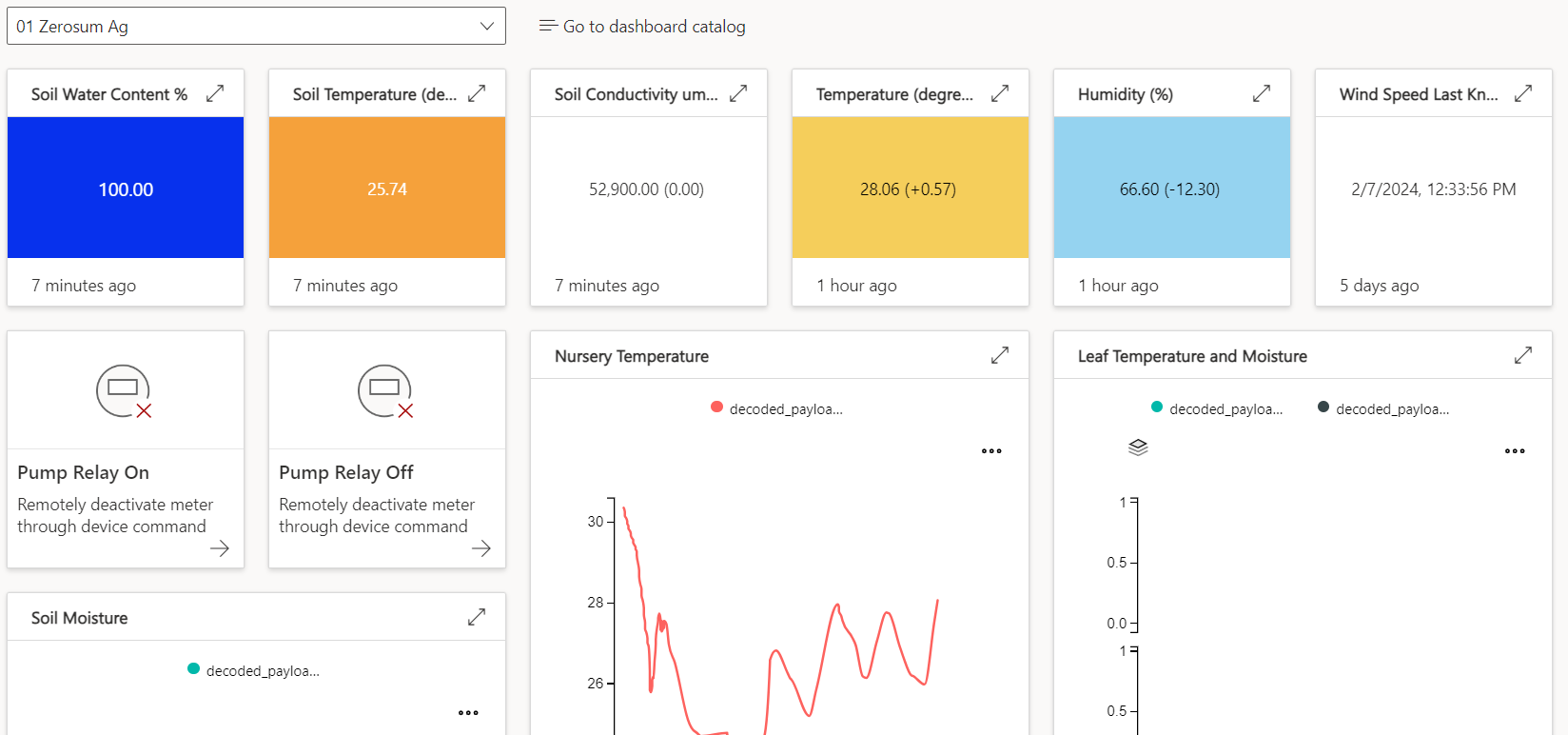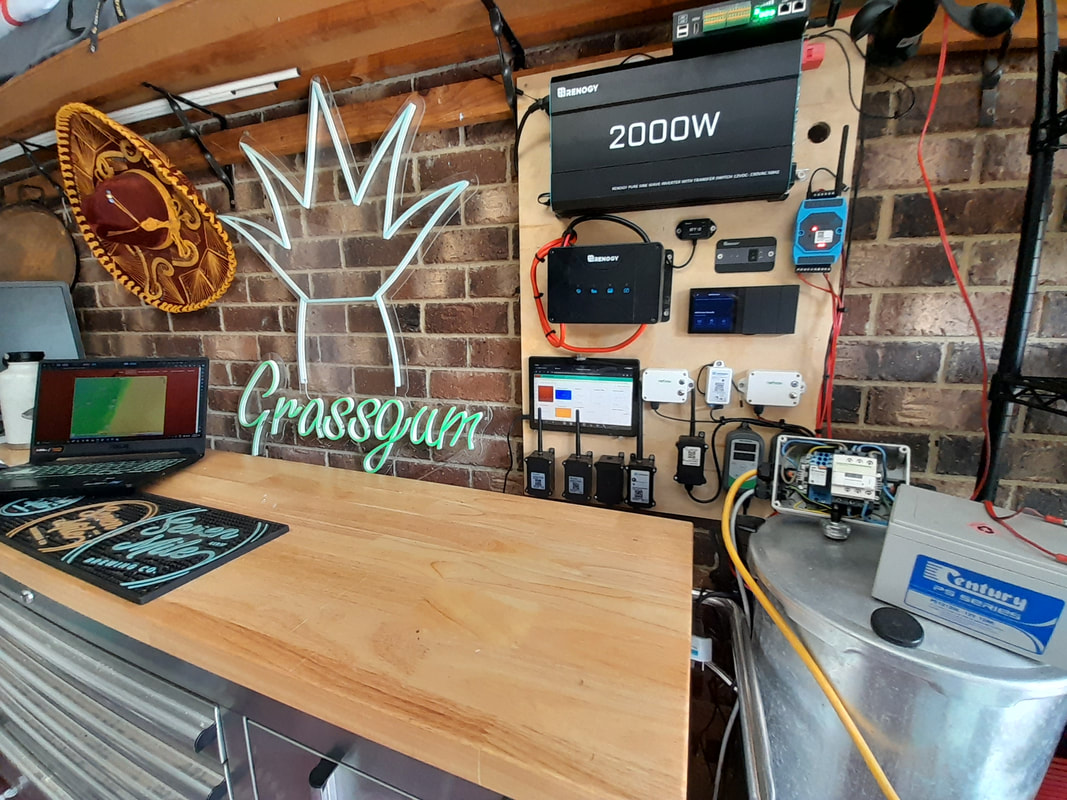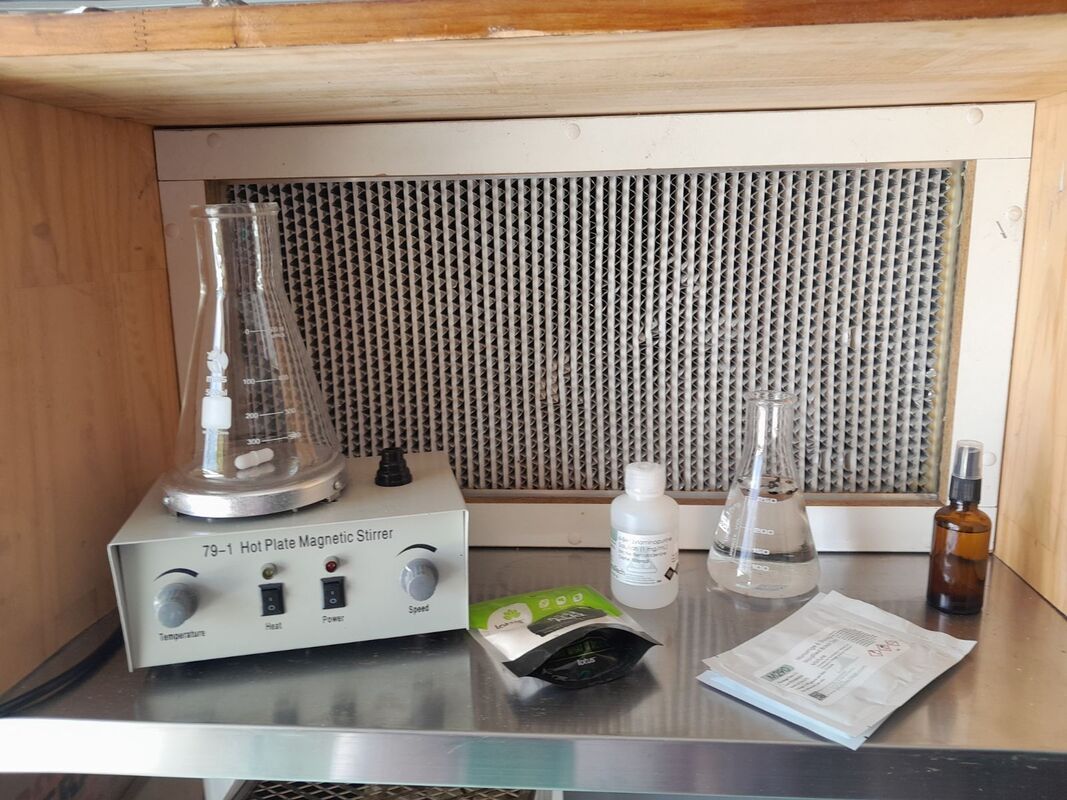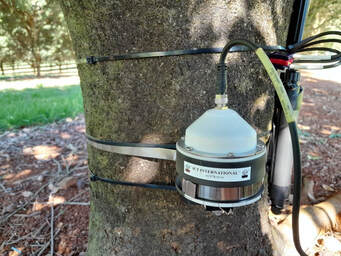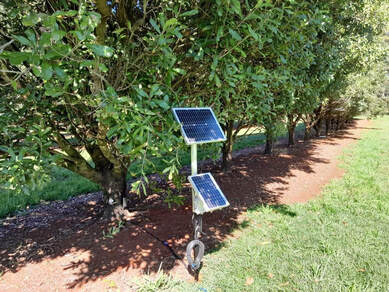|
Buidling the smarts and small off grid DC system for Grassgum Farm. This will make two smaller dc systems one a 10.4kW with auto genset backup, a 400a/hr an 200a/hr. We are integrating edge gateways for Artificial Intelligence A(I) and Machine Learning (ML). Our LoRaWAN and NbN IoT sensor network will capture the data while also enabling automation based on plant and environment.
At the heart of every farm is its people, their vision, the business structure, and planning, which drive the cropping practices. Business direction and plans require continual adaptation to opportunities that evolve from changing policies and regulations. New market opportunities such as export, biodiversity and Carbon, while external influences such as climate, market drivers and labour can affect production. Technology with the Internet of Things (IoT) is not only paving the way for insights into production, Artificial Intelligence (AI), Automated reporting, and for the Recovery and Resilience project the Hort360 tool is aimed at shaping change by improving practices to increase the triple bottom line through diversity and resilience on farm.
A question posed to an online AI program on what diversity and resilience practices are for farming suggested implementing strategies that promote soil health, biodiversity, and sustainable farming practices. These aim to enhance the resilience of farming systems to climate change, economic and market fluctuations, and environmental challenges. It is clear that at both a State and Federal level cost incentives, innovation and research targeting the above while reducing emissions are available to help diversify. Complete business plans by setting goals, strengths and weaknesses, highlight risks, and actions to take to reach your vision. There could be further plans developed or refined aimed at environmental outcomes, disaster and recovery, retirement or succession and is the first step towards a diverse and resilient business. Artificial Intelligence encompasses neural networks made up of layers of artificial neurons designed to imitate how the human brain works. A subfield of machine learning, neural networks lay the foundation for deep learning, which processes data in order to output a prediction. This could be across multiple datasets where simple and complex questions could be asked to provide information at your fingertips, IoT, Weather data, plant and project resources you might ask;
All this requires adaptation, and adoption for change. Just like economic path dependence mentioned in STORY 1 the same applies within people. Neuroscience has shown that within the human mind neuroplasticity is the ability of neural networks in the brain to change through growth and reorganisation. Effectively, rewiring old patterns results in change. Resilience also exists in neuroscience. Stress and trauma are common and can result in a variety of lasting pathologies. Most people show some degree of resilience to the negative effects of stressful or traumatic events. Studies have identified strategies that support brain and mental health. This might include parenting, community-based activity, meditation, and aerobic exercise. There can be no argument that technology is fast shaping society although its use is increasingly important within business. Although, there will always be the human element and as uncomfortable as change can be it might lead to improved resilience. Which is important for both farming practices and our mental health, leading to Better Business! AgriFutures Australia has announced Round 3 of its Producer Technology Uptake Program (PTUP). Sustainable Horticulture was awarded $20,000 to raise awareness of IoT technology for the Northern Rivers and Clarence Valley Macadamia growers. A LTE CAT M1 IoT Irradiation and Plant Health IoT package and cellular Energy monitoring devices were installed across three farms.
We were recently engaged to install a Plant health and Weather station at the NSW Alstonville DPI research facility to showcase some technology available to growers as part of the Farms of the Future Program. The program is due to commence in 2023 and requires growers to complete a Tocal course either in person or online, register HERE. Develop a Monitoring Plan for your business including a farm map, identification of pain points and addressing connectivity and Agtech device needs. The Monitoring Plan will act as a tool to assist you in developing your total farm connectivity and Agtech device solution.
Sustainable Horticulture has been awarded $20,000 as part of AgriFutures Australia’s Producer Technology Uptake Program to design bespoke projects to increase technology adoption on-farm.
Building on the success of the first two rounds, AgriFutures Australia has announced Round 3 of its Producer Technology Uptake Program (PTUP). Walkabout Ag was awarded $20,000 to raise awareness of IoT technology for our direct Horticultural growers group being predominately Macadamias. PTUP aims to establish a national network of farmers, fishers and foresters that champion and accelerate innovation and practice change on-farm. The program works with well-connected producer groups who know and understand their local producers’ needs, including knowledge gaps, skills and experience that prevent them from implementing agtech innovation. Sustainable Horticulture states that “This is a great opportunity for all farms in the Clarence Valley and Northern Rivers region to start there learning journey from this project and to adopt technology that is relevant to their site. For this region, farms in the Ballina, Byron and the Lismore LGAs will benefit further as the NSW Governments Farms of the Future (FoTF) grant program aligns with PTUPs vision to make agtech even more affordable. If there has been a time to adopt it is now.” The third-round projects are focused on trialing a range of technologies covering areas such as moisture sensing, weather monitoring, digital irrigation, IoT (Internet of things), biosecurity, connectivity and weed detection. The themes of the programs are broad yet specific in application. “We’re buoyed by the interest in the Program and are seeing the benefits of partnering with existing groups, who know their patch, but require support to bridge the gap between the opportunity and the tech solution – PTUP does just that,” added Ms Raufers. The national initiative rolls-out program activities over a 12-month period to drive peer-to-peer learning and is delivered across three tranches: farm-tech capacity building planning workshops, tech adoption grants and access to an online Community of Practice (CoP). To date, the Program has engaged 56 producer groups and 11 agricultural high schools, directly impacting 2,700 producers nationally, across many industries and enterprise sizes. The program has a footprint in all states and territories except for the Northern Territory. The energy monitoring devices are being installed as we speak and our light irradiation, plant health and climate Cat M1 system is due any day now. We will be launching some factsheets and begin to gather data to inform some case studies and more. Sensors
Nature is in effect a real time sensor with constant flux changes from various inputs. Trees do this by regulating the amount of water that moves from the soil solution into the roots, up through the xylem, and out to the atmosphere by opening or closing of stomatal pores. This cannot be achieved without the energy from the sun which is driving photosynthesis. With this relationship the cumulative use of water over a season and the resulting photosynthetic activity provides the plant sugars that move through the tree increasing total dry matter and or yield. Although should the nutrients not be available in the soil solution, which is dependent on soil moisture, then yields can be reduced. If the paddocks are being over irrigated leaching can occur removing fertiliser from the rootzone resulting in reduced efficiency. Soil moisture sensors placed at a 15, 30 and 90cm intervals, common soil profile measurements, to monitor where the moisture levels are can help prevent deep drainage losses, and over or under irrigating which could lead to ineffective energy use. The recent energy audits have included soil sensors as part of the energy water nexus with some sites witnessing a reduction of up to 30% in water use. Soil moisture sensors alone are not without issues. The contact with the soil is in comparison a very small sample of what may be occurring across a larger area (hectares) which can have varying soil properties (spatial variability). Further, it can get complex when two trees of the same species are close to one another, as they undertake Hydraulic Coupling, transferring water and nutrient through the root systems and between them. Typically, pump and flow meter data is used to estimate the volume of water applied from an irrigation event. To improve the efficiency in tree crops it is becoming increasingly common to measure the volume of water moving through tree stems using sap flow meters. Water stress can also be measured using stem psychrometers. This allows growers to see when their trees are active (day or night), and to closely match the total applied irrigation water to tree water use at exactly the right time. To achieve greater efficiencies, increase production while minimising resource use such as energy and water a suite of available sensors are available, these include;
Along with the mentioned sensors there are many more which cover many other factors. Dam and tank water levels can also be monitored along with the ability to auto start pumps according to rules set by the software that displays the incoming data. Armed with this data improvements in efficiency can be made. Bioenergy
Bioenergy has the potential to be a significant energy resource in Australia with an estimated 371PL p.a. available. Bioenergy is a form of renewable energy derived from biomass (organic materials) to generate electricity and heat, and liquid fuels for transport. Biofuels are liquid fuels, produced by chemical conversion processes that result in the production of ethanol and biodiesel. Biofuels can be broadly grouped according to the conversion processes. The fuel type (the heating value and moisture) and the conversion technology will influence the energy conversion efficiency. For example, the energy conversion efficiency for wood waste in a direct combustion facility is about 35%, compared to between 70-85% efficiency in a combined heat and power facility. Ethanol is produced by and not limited sugar by-products, waste starch from grain, and biodiesel is produced from used cooking oils, tallow from abattoirs and oilseeds. Typically, the resources used for bioenergy are dominated by forestry and agriculture residues from the sugar cane, grain and vegetable oil crops, and organic waste streams, which is typically used to produce biogas. Biogas is produced from anaerobic digestion using waste effluents such as wastewater, sewage sludge and municipal solid waste. Anaerobic bacteria digest organic material in the absence of oxygen and produce biogas. Anaerobic processes can be managed in a digester or airtight tank or covered lagoon. Currently Australia’s use of bioenergy for electricity generation is limited to bagasse (sugar cane), wood waste, and gas from landfill and sewage facilities. There is increasing use of this technology on both a small and large scale. Bioenergy offers the potential for considerable environmental benefits. Biomass releases Carbon dioxide (CO2) and other trace amounts of greenhouse gases when converted into another form of energy. However, CO2 is absorbed during vegetative growth through the photosynthesis process and Carbon assimilation. biogas is composed principally of methane and CO2 produced by anaerobic digestion of biomass. Although bioenergy offers a potential renewable form of energy good management of resources is needed, minimising chemical and fertiliser use, land degradation, energy, and water consumption. The biomass available for potential bioenergy is dependent on a range of factors such as feedstock prices, seasonal availability, and the relative value of biomass to produce other commodities. Things to consider for each bioenergy resource include moisture content, resource location and distribution, and type of conversion process. There is also a range of potential impacts on the resources including drought, flood, fire, climate change and energy prices. Commercialisation of advanced technologies will likely increase the range of resources, such as the non-edible (woody) parts of plants, Agaves and Algae. There is potential to expand Australia’s bioenergy sector utilising more of these organic and waste products. The right economic conditions may encourage growers to diversify towards bioenergy production or, upgrade infrastructure to produce energy onsite and offset consumption. The sugarcane industry is one of few industries self-sufficient in energy, through the combustion of bagasse in cogeneration plants. The sugar mill directly consumes the heat and electricity generated and any surplus steam is used to generate electricity and feed into the power grid. The total annual sugarcane crop is about 35.5 million tonnes (Mt), of which 14 per cent is cane fibre, resulting in a total available energy of above 90 PJ. The three main biomass combustion conversion technologies are grate boilers, fluidised bed combustion (gasification) and co-firing in utility boilers. In the most efficient electricity generation plant, around 30 per cent of the energy in the biomass is converted into electricity; the rest is lost into the air and water. Cogeneration or combined heat and power plants have greater conversion efficiencies because they produce both electricity and process heat. Trigeneration technology provides cooling in addition to heat and electricity generation. The process waste heat can be usefully applied for heating in winter and, via an absorption chiller or refrigeration, for cooling in summer. The use of gasification is more efficient for energy recovery in terms of electricity generation than traditional combustion. In gasification, solid biomass is heated to high temperatures (800–1000°C) in a gasifier and converted to a syngas primarily composed of Hydrogen, Carbon monoxide, Carbon dioxide, water vapour and Methane. One benefit is that there are lower amounts of Sodium oxide, Nitrous oxide, and dioxin emissions than in a traditional combustion process. |
